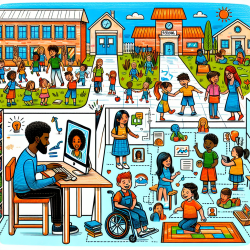Introduction
As a Special Education Director, I am constantly seeking innovative solutions to enhance the services we provide to our students. One area that has caught my attention is the application of high-entropy alloys (HEAs) research in addressing therapist staffing shortages in special education. The recent study titled Size effect, critical resolved shear stress, stacking fault energy, and solid solution strengthening in the CrMnFeCoNi high-entropy alloy offers insights that can be translated into our field, particularly in optimizing online therapy services.
Understanding the Research
The research delves into the mechanical properties of the CrMnFeCoNi high-entropy alloy, a novel material known for its exceptional strength and ductility. By examining the critical resolved shear stress (CRSS) and stacking fault energy, the study provides a comprehensive understanding of how these alloys behave under various conditions. The findings indicate that these alloys maintain their strength and toughness even at cryogenic temperatures, making them ideal for applications requiring durability and resilience.
Implementing Research Outcomes in Online Therapy
While the research is primarily focused on materials science, its implications can be extended to the realm of online therapy services. Here are some ways practitioners can leverage these findings:
- Durability and Reliability: Just as HEAs maintain strength under stress, online therapy platforms can be designed to be robust and reliable, ensuring uninterrupted service delivery even during peak usage times.
- Adaptability: The ability of HEAs to perform well across a range of temperatures can inspire the development of adaptable online therapy systems that cater to diverse student needs and learning environments.
- Innovation in Service Delivery: The innovative approach to material strengthening in HEAs can encourage practitioners to explore new methods and technologies in delivering therapy, such as virtual reality or AI-driven interventions.
Encouraging Further Research
The study's exploration of the microstructural behavior of HEAs opens the door for further research into how these principles can be applied to enhance online therapy services. By collaborating with materials scientists, educators can develop cutting-edge solutions that address the unique challenges faced by students with special needs.
Conclusion
Incorporating insights from high-entropy alloys research into the design and delivery of online therapy services can lead to more effective and resilient educational support systems. By embracing innovation and collaboration, we can better meet the needs of our students and ensure they receive the highest quality of care.
To read the original research paper, please follow this link: Size effect, critical resolved shear stress, stacking fault energy, and solid solution strengthening in the CrMnFeCoNi high-entropy alloy.










